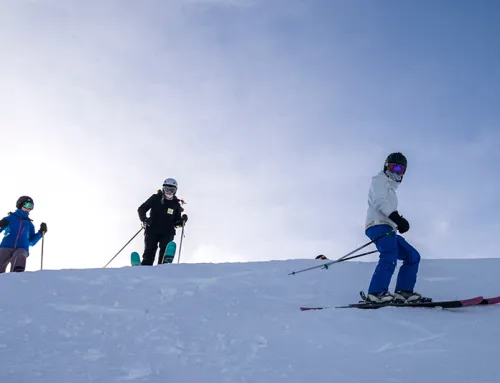Embarking on a journey to Yoho National Park? In our guide, you’ll find everything you need to immerse yourself in its awe-inspiring scenery, from the iconic Emerald Lake to the heights of Takakkaw Falls. Explore the park’s magnificent hikes, spot local wildlife, and learn about the ancient Burgess Shale fossils. Whether planning your stay at Yoho Chalets in the lush summer or the serene winter, uncover the top activities and essential tips for a memorable trip. Let’s discover Yoho — adventure awaits!
Exploring Yoho National Park
Yoho National Park, established in 1885, is a designated conservation area in southeastern British Columbia. The park stretches along the western slope of the Continental Divide of the Americas, near the Trans Canada Highway. ‘Yoho’ is a Cree expression evoking ‘awe,’ perfectly encapsulating the park’s grandeur. The Park’s topography includes the towering South Goodsir Tower, reaching an elevation of 31,656 meters (11,686 feet), and the mighty Kicking Horse River, a designated Canadian Heritage River that flows down a 53 kilometres (33 miles) steep valley.
Although Yoho National Park is smaller and less crowded than its neighbour, Banff National Park, it is magnificent. The park can easily be accessed by road, with many of its attractions conveniently accessible. A short 2-hour drive west from Calgary along the Trans-Canada Highway 1 will lead to the charming town of Field, British Columbia, a gateway to the park’s abundant wonders.
Unforgettable Sights and Attractions
Yoho National Park offers an array of unforgettable sights and attractions, each with unique charm and allure. Some of the highlights include:
- The captivating emerald waters of Emerald Lake
- The geological wonder of the Natural Bridge
- The awe-inspiring Takakkaw Falls
- The historic Spiral Tunnels, a testament to the engineering marvel of the late 1800s
These attractions promise a feast for the eyes and offer visitors a glimpse into the park’s rich history.
The beauty of each attraction is magnified by the surrounding landscapes – the rugged Canadian Rockies, the lush Yoho Valley, and the stunning Yoho Valley Road. Each sight is a testament to the park’s natural beauty, which has earned it a spot on the World Heritage List. Let’s examine the unique characteristics of each attraction, beginning with the stunning Emerald Lake.
Emerald Lake

Spectacular Emerald Lake near Field, BC
Emerald Lake, the largest lake in Yoho National Park, is truly a sight to behold. Its striking turquoise waters, nestled amid the surrounding President Range mountains — named after the President and Vice-President of the coast-to-coast Canadian Pacific Railway, built in 1885 and which runs through Yoho National Park — a natural amphitheatre that leaves visitors in awe. During the summer months, visitors can engage in paddleboarding or canoeing on the serene lake, while the winter season offers a different kind of beauty as the landscape transforms into a winter wonderland.
The Lakeshore trail, a gently sloping gravel pathway, stretches from the parking area to the bridge at the rear of the lake. This trail offers picturesque views of the surrounding mountains and glaciers.
The Natural Bridge
The Natural Bridge, a distinctive rock formation within Yoho National Park, is a marvel of Mother Nature’s power. Over thousands of years, the steady flow of the Kicking Horse River has gradually eroded the limestone rock, creating this natural rock bridge. Today, this remarkable formation offers a breathtaking landscape that captivates visitors.
The Kicking Horse River is pivotal in shaping the park’s landscape. Not only has it contributed to the formation of the Natural Bridge, but its flow also influences other features within the park, such as Wapta Falls. The Natural Bridge is a testament to the never-ending dance between water and rock, a spectacle that will leave you spellbound.
Takakkaw Falls
Takakkaw Falls is one of the park’s most stunning attractions, cascading from 384 meters (1,260 feet), making it one of the highest waterfalls in Canada. The name ‘Takakkaw’ is derived from the Cree language, meaning ‘Magnificent,’ a fitting name for this spectacular waterfall.
The falls are easily accessed via the Yoho Valley Road, about 30 minutes from Field and 45 minutes East of Yoho Chalets. From the parking area, a well-maintained trail leads you on a 1.4 km (0.86 miles) round-trip hike to the base of the falls.
The best time to view the falls is in early June, when the spring thaw increases the water flow, making the falls even more impressive. Remember to follow safety guidelines during your visit, including maintaining a safe distance from wildlife and avoiding slippery and rocky areas near waterfalls and streams.
The Spiral Tunnels

Canadian Pacific train travelling through Yoho National Park in Field, BC
The Spiral Tunnels, another attraction within Yoho National Park, stand as a testament to the engineering marvel of the late 1800s. These tunnels were constructed to facilitate the passage of trains through the challenging inclines of the Rocky Mountains, providing a unique attraction for visitors.
The Spiral Tunnels were completed in 1909 after a 20-month construction period involving 1,000 workers and 75 carloads of dynamite. Today, visitors can observe this significant railway engineering from two vantage points: the Lower Spiral Tunnel viewpoint and the Upper Spiral Tunnel lookout. With 25 to 30 trains passing through the tunnels daily, there are plenty of opportunities to witness this remarkable feat of engineering in action.
Hiking Adventures in Yoho National Park
Yoho National Park offers several top-notch hiking trails for adventurous people. Some of the most popular trails include:
- Paget Peak
- Lake McArthur and Lake O’Hara
- Iceline Trail
- Wapta Falls
Each trail offers a unique hiking experience and breathtaking views. Whether you’re a seasoned hiker or a novice, you’ll find a trail that suits your skill level and interest, providing a unique perspective of Yoho National Park’s natural beauty. For example, the Iceline Trail provides mesmerizing views of glaciers, waterfalls, and wildflowers. At the same time, the journey to Paget Peak offers impressive vistas of Kicking Horse Pass and the Great Divide Glacier.
Paget Peak
Paget Peak offers an easy scramble hike that rewards hikers with incredible views of Kicking Horse Pass and the Great Divide Glacier. The hike, generally considered easy for regular hikers up to Paget Lookout, typically takes around 4 hours.
Safety is paramount when hiking, and Paget Peak is no exception; be sure to:
- Stay on designated trails
- Pack essential items like food, water, sun protection, weather-appropriate clothing and gear
- Prepare for varying weather conditions
- Adhere to “Leave No Trace” principles to preserve the environment
Lake McArthur and Lake O’Hara
Lake McArthur, a picturesque alpine lake in the Lake O’Hara region of Yoho National Park, is a sight to behold. The lake is accessible via an 8 km round trip hike from the stunning Lake O’Hara, making it a perfect destination for hikers of all levels.
The average duration for the hike to Lake McArthur from Lake O’Hara is typically around 2.5 hours. The hike is categorized as moderate in terms of difficulty, making it an excellent option for hikers seeking a bit of a challenge.
Iceline Trail

Mountain view from the Iceline Trail in Yoho National Park, Canada
The Iceline Trail is a 14.2 km hike that takes you through stunning landscapes, including prominent glaciers such as:
- Daly Glacier
- Fairy Glacier
- Diableret Glacier
- Niles Glacier
- Yoho Glacier
Along the trail, hikers are treated to impressive waterfalls, alpine lakes, and towering peaks, making it a must-visit trail for nature lovers.
This trail is moderately challenging, but the breathtaking views are worth the effort. The trail suits novice and seasoned hikers, provided they are adequately prepared.
The best time to hike the Iceline Trail is from late July to early August, when the trail is typically snow-free, and the wildflowers are in full bloom.
Wapta Falls
Wapta Falls, the largest waterfall on the Kicking Horse River, offers a picturesque hike with breathtaking views. The First Nations people named the falls, and they hold historical significance as the site of an event in 1858 that led to the naming of the Kicking Horse River. The falls are recognized as a top attraction and have attracted numerous visitors due to their picturesque hikes and exceptional views, especially during winter. With a vertical drop of 30 meters (98 feet) and a width of 150 meters (492 feet), Wapta Falls is truly a sight to behold.
The hike to Wapta Falls is relatively easy, making it suitable for hikers of all levels. You can access the trailhead from the Trans-Canada 1 Highway on the west side of Yoho. The hike takes around an hour and a half to complete a round trip and offers stunning views of the surrounding mountains and valleys. In the summer, visitors can enjoy the lush greenery and wildflower blooms along the trail, while in winter, the frozen waterfall creates a magical atmosphere.
The Fascinating Burgess Shale Fossils
The Burgess Shale, located near Field, British Columbia, is a significant layer of rock dating back half a billion years. This World UNESCO site offers a unique opportunity to travel back in time and explore the ancient history of life on Earth, housing some of paleontology’s most valuable fossils.
These 500-million-year-old specimens represent a variety of ancient life forms, offering a unique insight into the mid-Cambrian life. The Burgess Shale contains fossils of various sizes and shapes, along with macroscopic algae, showcasing the diversity of marine life over 505 million years ago.
Plan a guided hike with expert guides at Stanley Glacier, Mount Stephen, or Walcott Quarry to discover some of the oldest animal fossils on Earth — this is a must-do Canadian Rockies experience!
Wildlife Encounters in Yoho National Park
Yoho National Park is home to diverse wildlife, making it a paradise for nature enthusiasts. The park is inhabited by:
- Moose
- Grizzly bears
- Elk
- Cougars
- Alpine species include mountain goats, ptarmigans, pikas, ground squirrels, and marmots.
Visiting Yoho National Park offers a unique opportunity to observe these animals in their natural habitat. However, practicing responsible wildlife viewing is necessary for your safety and the well-being of the animals. Always maintain a safe distance, do not feed or approach wildlife, and follow all park rules and guidelines.
Seasonal Highlights and Best Time to Visit
The best time to visit Yoho National Park depends on your preferred activities. For hiking and nature, come between May and mid-September when trails are open and the landscape is lush. This season offers warm weather ideal for visiting Emerald Lake and the Burgess Shale. Late summer might even present a glimpse of the Northern Lights.
Winter enthusiasts should visit from late November to March to enjoy skiing and snowmobiling in the snowy surroundings. Kicking Horse Mountain Resort is a hotspot for winter sports during this time, with snow depths often exceeding 127cm (50 inches).
Yoho National Park provides year-round experiences, from spring’s fresh greenery and wildflowers to autumn’s colourful foliage. Wildlife sightings vary by season, with spring and early summer being prime for observing bears and birds. Whether you’re after summer hikes, winter excitement, or a peaceful cabin retreat, Yoho Chalets is your place for year-round accommodations.
The Charming Village of Field
Established in the 1880s as a siding for the Canadian Pacific Railway, the village of Field offers more than just a place to rest. Nestled in the heart of Yoho National Park, it is a destination in and of itself, characterized by its warm-hearted residents and relaxed vibe. A stroll through Field reveals the distinct architecture of the Yoho National Park Visitor Centre and the rich tapestry of the village’s history. The local eateries, quaint cafes, and unique artisan shops provide a window into the community’s vibrant culture and artistry.
For those eager to embrace the great outdoors, Emerald Lake, the Natural Bridge, Burgess Shale, and Takkakaw Falls are a stone’s throw away, inviting visitors to enter the park’s overwhelming natural splendour.
Plan Your Visit to Yoho
Before visiting Yoho National Park, purchase a National Parks Discovery Pass. Adult daily entry is $11, seniors pay $8, and children 17 and under enter for free. The annual pass offers unlimited access to all Canadian National Parks for a year and is an excellent deal at $75.25 for adults, $64.50 for seniors, and $151.25 for families or groups — buy your pass online or at the Yoho National Park Visitor Centre to enjoy Canada’s natural beauty all year round.
Yoho National Park offers an unforgettable journey into the heart of Canada’s natural beauty. From its breathtaking landscapes, cascading waterfalls, and unique wildlife to its hiking trails, historic towns, and ancient fossils, the park presents a world of adventure and discovery.
Plan your visit to Yoho National Park — book your stay at Yoho Chalets today, and prepare for a journey you’ll cherish forever!




